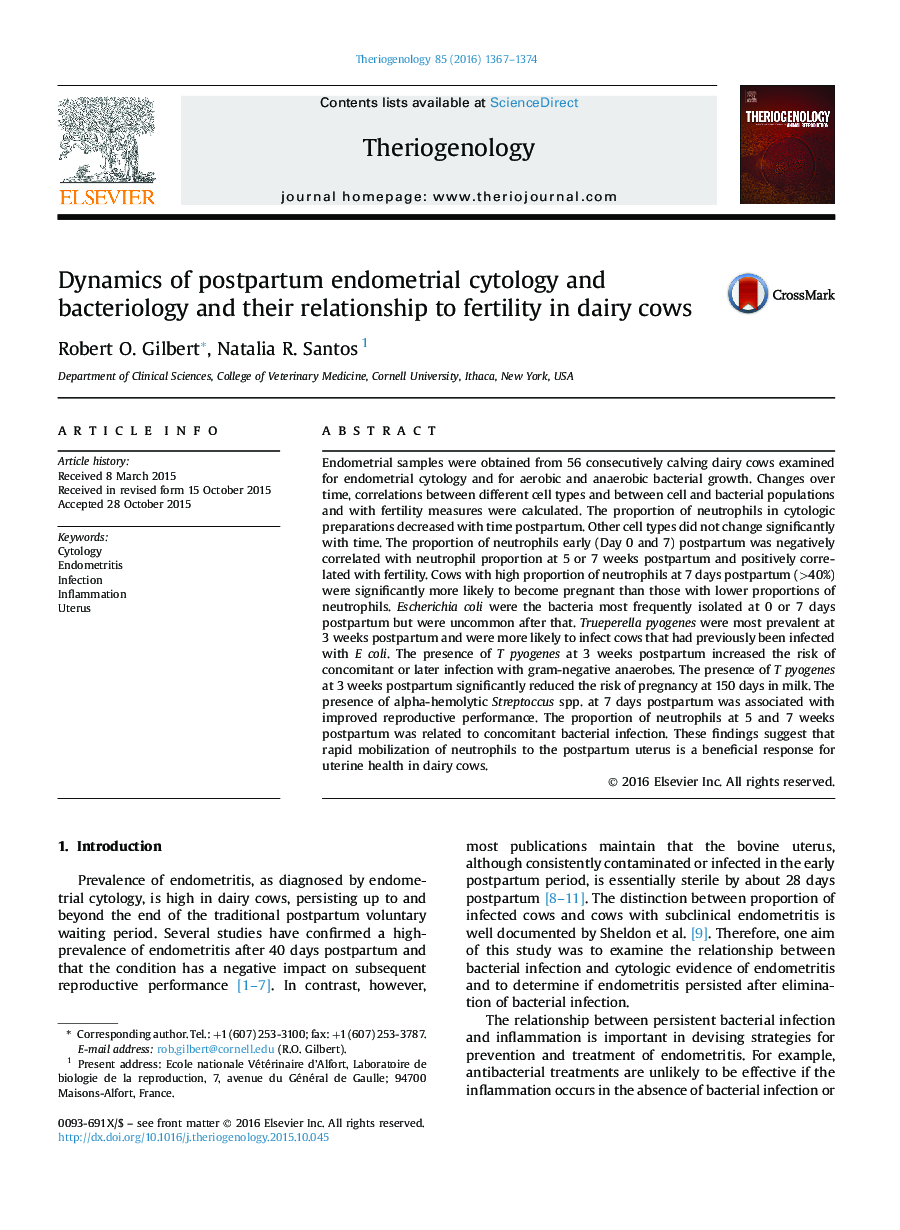| Article ID | Journal | Published Year | Pages | File Type |
|---|---|---|---|---|
| 2094782 | Theriogenology | 2016 | 8 Pages |
Endometrial samples were obtained from 56 consecutively calving dairy cows examined for endometrial cytology and for aerobic and anaerobic bacterial growth. Changes over time, correlations between different cell types and between cell and bacterial populations and with fertility measures were calculated. The proportion of neutrophils in cytologic preparations decreased with time postpartum. Other cell types did not change significantly with time. The proportion of neutrophils early (Day 0 and 7) postpartum was negatively correlated with neutrophil proportion at 5 or 7 weeks postpartum and positively correlated with fertility. Cows with high proportion of neutrophils at 7 days postpartum (>40%) were significantly more likely to become pregnant than those with lower proportions of neutrophils. Escherichia coli were the bacteria most frequently isolated at 0 or 7 days postpartum but were uncommon after that. Trueperella pyogenes were most prevalent at 3 weeks postpartum and were more likely to infect cows that had previously been infected with E coli. The presence of T pyogenes at 3 weeks postpartum increased the risk of concomitant or later infection with gram-negative anaerobes. The presence of T pyogenes at 3 weeks postpartum significantly reduced the risk of pregnancy at 150 days in milk. The presence of alpha-hemolytic Streptoccus spp. at 7 days postpartum was associated with improved reproductive performance. The proportion of neutrophils at 5 and 7 weeks postpartum was related to concomitant bacterial infection. These findings suggest that rapid mobilization of neutrophils to the postpartum uterus is a beneficial response for uterine health in dairy cows.
